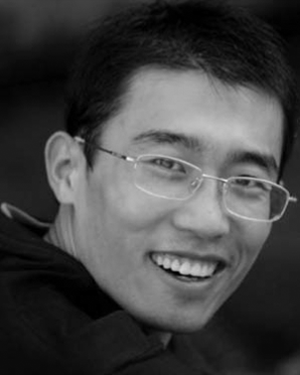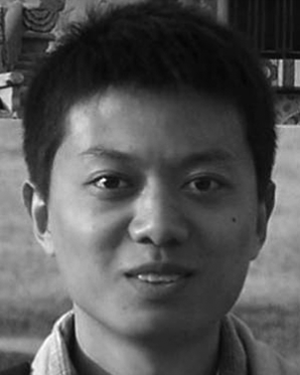Abstract:
Hashing methods are effective in generating compact binary signatures for images and videos. This paper addresses an important open issue in the literature, i.e., how to ...Show MoreMetadata
Abstract:
Hashing methods are effective in generating compact binary signatures for images and videos. This paper addresses an important open issue in the literature, i.e., how to learn compact hash codes by enhancing the complementarity among different hash functions. Most of prior studies solve this problem either by adopting time-consuming sequential learning algorithms or by generating the hash functions which are subject to some deliberately-designed constraints (e.g., enforcing hash functions orthogonal to one another). We analyze the drawbacks of past works and propose a new solution to this problem. Our idea is to decompose the feature space into a subspace shared by all hash functions and its complementary subspace. On one hand, the shared subspace, corresponding to the common structure across different hash functions, conveys most relevant information for the hashing task. Similar to data de-noising, irrelevant information is explicitly suppressed during hash function generation. On the other hand, in case that the complementary subspace also contains useful information for specific hash functions, the final form of our proposed hashing scheme is a compromise between these two kinds of subspaces. To make hash functions not only preserve the local neighborhood structure but also capture the global cluster distribution of the whole data, an objective function incorporating spectral embedding loss, binary quantization loss, and shared subspace contribution is introduced to guide the hash function learning. We propose an efficient alternating optimization method to simultaneously learn both the shared structure and the hash functions. Experimental results on three well-known benchmarks CIFAR-10, NUS-WIDE, and a-TRECVID demonstrate that our approach significantly outperforms state-of-the-art hashing methods.
Published in: IEEE Transactions on Cybernetics ( Volume: 45, Issue: 9, September 2015)
Funding Agency:

State Key Laboratory of Software Development Environment, Beihang University, Beijing, China
Xianglong Liu received the B.S. and Ph.D. degrees in computer science from Beihang University, Beijing, China, in 2008 and 2014, respectively. From 2011 to 2012, he visited the Digital Video and Multimedia Laboratory, Columbia University, New York, NY, USA, as a joint Ph.D. student.
He is currently an Assistant Professor with State Key Lab of Software Development Environment, School of Computer Science and Engineering, Bei...Show More
Xianglong Liu received the B.S. and Ph.D. degrees in computer science from Beihang University, Beijing, China, in 2008 and 2014, respectively. From 2011 to 2012, he visited the Digital Video and Multimedia Laboratory, Columbia University, New York, NY, USA, as a joint Ph.D. student.
He is currently an Assistant Professor with State Key Lab of Software Development Environment, School of Computer Science and Engineering, Bei...View more

AT&T Laboratories Research, Middletown, NJ, USA
Yadong Mu received the Ph.D. degree from Peking University, Beijing, China, in 2009.
He is currently a Senior Member of Technical Staff with AT&T Laboratories Research, Middletown, NJ, USA. His current research interests include large-scale machine learning and visual analytics.
Yadong Mu received the Ph.D. degree from Peking University, Beijing, China, in 2009.
He is currently a Senior Member of Technical Staff with AT&T Laboratories Research, Middletown, NJ, USA. His current research interests include large-scale machine learning and visual analytics.View more
State Key Laboratory of Software Development Environment, Beihang University, Beijing, China
Danchen Zhang received the master’s degree in computer science from Beihang University, Beijing, China, and is currently pursuing the Ph.D. degree from Information School, University of Pittsburgh, Pittsburgh, PA, USA.
Her current research interests include hash indexing and exploratory search.
Danchen Zhang received the master’s degree in computer science from Beihang University, Beijing, China, and is currently pursuing the Ph.D. degree from Information School, University of Pittsburgh, Pittsburgh, PA, USA.
Her current research interests include hash indexing and exploratory search.View more
State Key Laboratory of Software Development Environment, Beihang University, Beijing, China
Bo Lang received the Ph.D. degree from Beihang University, Beijing, China.
She is a Professor with the School of Computer Science and Engineering, Beihang University, Beijing, China. Her current research interests include information security, data management, and information retrieval.
Bo Lang received the Ph.D. degree from Beihang University, Beijing, China.
She is a Professor with the School of Computer Science and Engineering, Beihang University, Beijing, China. Her current research interests include information security, data management, and information retrieval.View more
Center for Optical Imagery Analysis and Learning, State Key Laboratory of Transient Optics and Photonics, Xi’an Institute of Optics and Precision Mechanics, Chinese Academy of Sciences, Xi’an, China
Xuelong Li (M’02–SM’07–F’12) is a Full Professor with the Center for Optical Imagery Analysis and Learning, State Key Laboratory of Transient Optics and Photonics, Xi’an Institute of Optics and Precision Mechanics, Chinese Academy of Sciences, Xi’an, China.
Xuelong Li (M’02–SM’07–F’12) is a Full Professor with the Center for Optical Imagery Analysis and Learning, State Key Laboratory of Transient Optics and Photonics, Xi’an Institute of Optics and Precision Mechanics, Chinese Academy of Sciences, Xi’an, China.View more

State Key Laboratory of Software Development Environment, Beihang University, Beijing, China
Xianglong Liu received the B.S. and Ph.D. degrees in computer science from Beihang University, Beijing, China, in 2008 and 2014, respectively. From 2011 to 2012, he visited the Digital Video and Multimedia Laboratory, Columbia University, New York, NY, USA, as a joint Ph.D. student.
He is currently an Assistant Professor with State Key Lab of Software Development Environment, School of Computer Science and Engineering, Beihang University, Beijing, China. His current research interests include machine learning, computer vision, and multimedia information retrieval.
Xianglong Liu received the B.S. and Ph.D. degrees in computer science from Beihang University, Beijing, China, in 2008 and 2014, respectively. From 2011 to 2012, he visited the Digital Video and Multimedia Laboratory, Columbia University, New York, NY, USA, as a joint Ph.D. student.
He is currently an Assistant Professor with State Key Lab of Software Development Environment, School of Computer Science and Engineering, Beihang University, Beijing, China. His current research interests include machine learning, computer vision, and multimedia information retrieval.View more

AT&T Laboratories Research, Middletown, NJ, USA
Yadong Mu received the Ph.D. degree from Peking University, Beijing, China, in 2009.
He is currently a Senior Member of Technical Staff with AT&T Laboratories Research, Middletown, NJ, USA. His current research interests include large-scale machine learning and visual analytics.
Yadong Mu received the Ph.D. degree from Peking University, Beijing, China, in 2009.
He is currently a Senior Member of Technical Staff with AT&T Laboratories Research, Middletown, NJ, USA. His current research interests include large-scale machine learning and visual analytics.View more
State Key Laboratory of Software Development Environment, Beihang University, Beijing, China
Danchen Zhang received the master’s degree in computer science from Beihang University, Beijing, China, and is currently pursuing the Ph.D. degree from Information School, University of Pittsburgh, Pittsburgh, PA, USA.
Her current research interests include hash indexing and exploratory search.
Danchen Zhang received the master’s degree in computer science from Beihang University, Beijing, China, and is currently pursuing the Ph.D. degree from Information School, University of Pittsburgh, Pittsburgh, PA, USA.
Her current research interests include hash indexing and exploratory search.View more
State Key Laboratory of Software Development Environment, Beihang University, Beijing, China
Bo Lang received the Ph.D. degree from Beihang University, Beijing, China.
She is a Professor with the School of Computer Science and Engineering, Beihang University, Beijing, China. Her current research interests include information security, data management, and information retrieval.
Bo Lang received the Ph.D. degree from Beihang University, Beijing, China.
She is a Professor with the School of Computer Science and Engineering, Beihang University, Beijing, China. Her current research interests include information security, data management, and information retrieval.View more
Center for Optical Imagery Analysis and Learning, State Key Laboratory of Transient Optics and Photonics, Xi’an Institute of Optics and Precision Mechanics, Chinese Academy of Sciences, Xi’an, China
Xuelong Li (M’02–SM’07–F’12) is a Full Professor with the Center for Optical Imagery Analysis and Learning, State Key Laboratory of Transient Optics and Photonics, Xi’an Institute of Optics and Precision Mechanics, Chinese Academy of Sciences, Xi’an, China.
Xuelong Li (M’02–SM’07–F’12) is a Full Professor with the Center for Optical Imagery Analysis and Learning, State Key Laboratory of Transient Optics and Photonics, Xi’an Institute of Optics and Precision Mechanics, Chinese Academy of Sciences, Xi’an, China.View more


